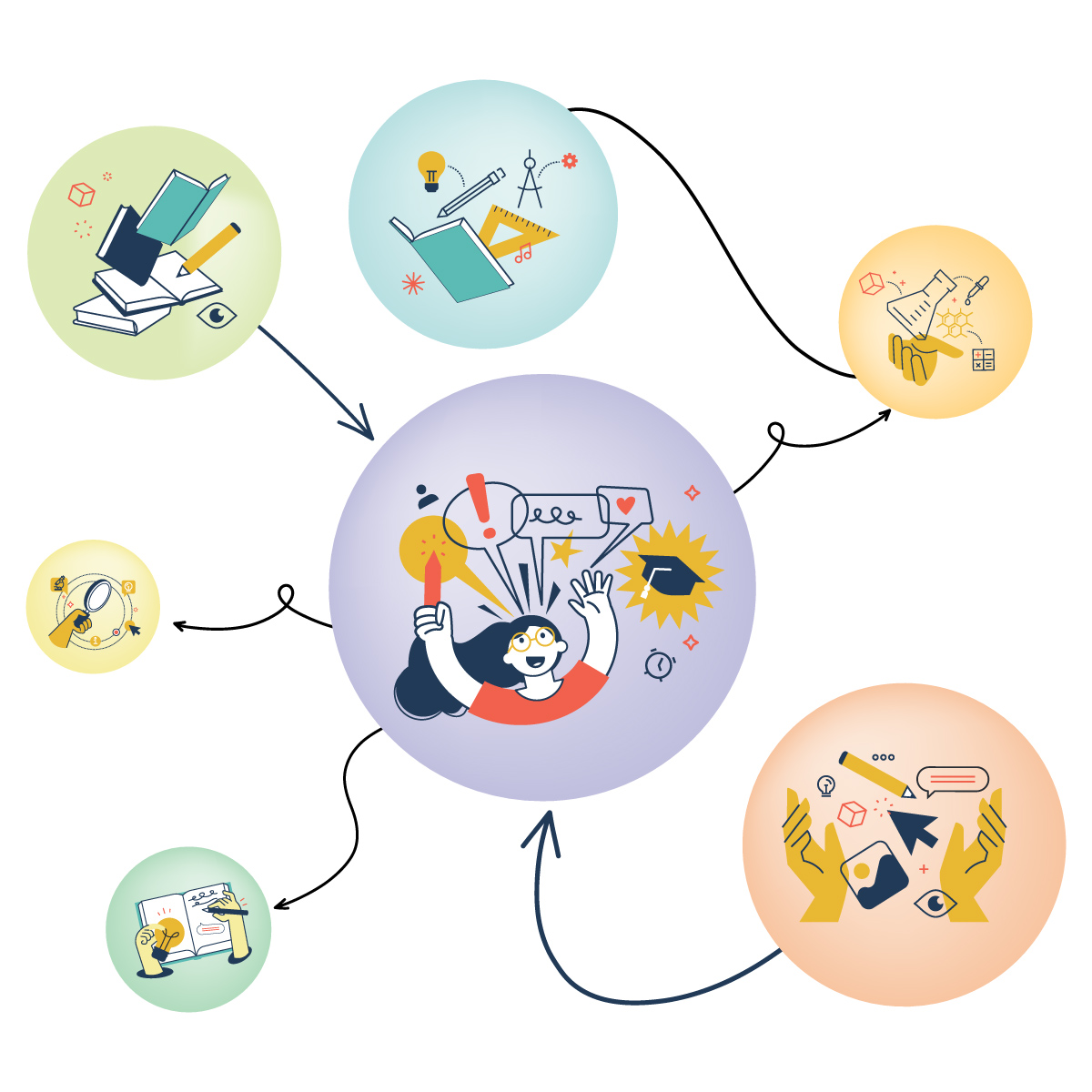Over the last few years, schools have begun rewriting reading curriculum or adopting new resources in support of knowledge building, and rightfully so. Research reminds us that in order for students to comprehend texts well, background knowledge is essential. However, some published programs seem to miss the mark in three important ways – the essential questions don’t always lead to conceptual understandings and opportunities for transfer, choice in topics and reading material is absent which limits opportunities for student relevance, and end of unit assessments mimic standardized tests rather than provide students with opportunities to present and showcase what they’ve learned in meaningful and creative ways. If we want students to be invested in their learning and value reading as a rich, meaningful and relevant endeavor, we must be sure that we design instruction in ways that allow for engagement, transfer, and creativity.
Knowledge building is much more than just learning facts. It requires readers to think critically about a topic. In order to do so, students need to have extensive background knowledge and understand a topic deeply through different perspectives and points of view. If we want students to have such a deep understanding, we must focus on conceptual knowledge that begins with designing reading experiences with rich, essential questions. In these experiences, students need to read across multiple texts with diverse perspectives and across topics in ways that they develop a deeper conceptual knowledge. It’s the difference between spending weeks studying arctic animals and instead focusing on animal adaptations. Or rather than just teaching facts about the American Revolution, focusing on abuse of power, injustice, and rebellion. Or rather than a unit on rainforests, studying human impact on the environment. In these examples, essential questions such as “How do animals survive in their environments?”, “How do people organize to fight injustice?” and “How do humans impact the environment?” allow for students to transfer what they are learning across topics with similar big ideas or conceptual understandings.
While a teacher might still decide to go deeper with arctic animals, the American Revolution, or the Amazon rainforest, having a focus on conceptual knowledge allows for additional texts and discussions on other related topics so that students can transfer that knowledge to topics of their own interest or ones that are relevant to their lives. So students might have an interest in learning about other types of animal adaptations or looking at animals native to their own region. A group of activists might want to learn about a local protest that they observed or read more about a current political movement. Readers might have an interest in studying climate change or reading about the melting polar ice caps. When they have opportunities to transfer knowledge and read about relevant topics or topics in which they care about, they are more likely to be engaged. It also creates the conditions for the situation model in comprehension where students then cement the learning into their long-term memory and have an enduring understanding for whenever they read about or encounter situations where those concepts and big ideas are presented again.
To further enrich their experience and learning, students need to be able to demonstrate and showcase what they’ve learned with culminating experiences or end-of-unit assessments that relate to the concepts and big ideas they’ve studied. Students need choice in performance tasks where they might decide to create a presentation or performance in collaboration with peers to showcase what they’ve learned. A group of students might decide to create an exhibit displaying animals in a particular habitat. Students might decide to write persuasive speeches or organize a protest about injustices they perceive. A group of student activists might find ways to raise awareness and find small solutions to an environmental problem. If a more traditional type of assessment is preferred, then students should read about another related topic and answer questions or write extended responses related to the conceptual knowledge and essential question of the unit.
While we shift and tweak our approach to reading instruction in ways that support current science and research, we must be cautious not to disengage students. We must continue to honor engagement and make learning relevant for students. We can balance knowledge building with student choice that builds conceptual understandings and allows students to engage with topics in meaningful ways. Whether adopting a resource or writing curriculum, we can look more closely at the topics we choose to study and ensure essential questions, reading experiences, and assessments focus on richer, deeper, conceptual knowledge that give students choice and opportunities to explore and present on related topics of relevance.
 Ready to get started? Check out this Step-by-Step Guide for Classroom Implementation to support you in your journey.
Ready to get started? Check out this Step-by-Step Guide for Classroom Implementation to support you in your journey.
It’s time to transform literacy into a powerful driver of justice and inclusion. Literacy and Justice for All is a collaborative, research-based approach to learning designed to elevate learner voice, build teacher capacity, and close opportunity gaps through culturally sustaining instructional practices. Grounded in equity and evidence, this framework equips educators with the tools to foster reading, writing, and thinking that reflect every learner’s full humanity. Whether you’re a classroom teacher, instructional coach, or district leader, this work will help you, your colleagues, and your students find success with all your literacy goals.
Learn how you can bring Literacy and Justice for All to your school or district today.



